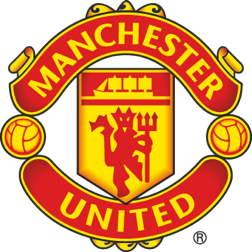The Busby Babes
The birth and rise of the Busby Babes
During the 1930s, the club was twice relegated from the top division and was close to bankruptcy. Then in 1941, during the Second World War, the Luftwaffe (Nazi Germany’s air force) bombed Old Trafford, leaving United to play their home games at Maine Road - the ground of local rivals Manchester City.
Such matters were, however, incidental to Matt Busby when he agreed to take charge at United on 19 February 1945. For Busby had a glittering vision: he saw beauty in that bombed-out stadium, and the chance to create a phoenix from those flames.
A native of Bellshill, a coal-mining community in Lanarkshire, Scotland, Busby knew the value of hard work, and recognised what honest endeavour could achieve. Crucially, too, he knew both Manchester and its people, having played for Manchester City in their 1934 FA Cup success. His partnership with United would change the face of English football.
Liverpool wanted Busby back after the war as player-coach. But Busby wanted to shape the future - he dreamed of younger, fresher legs, players to mould in his image. He knew youth held the key, not only to United’s success, but the future of the game. He found a kindred spirit in his predecessor Walter Crickmer, who remained club secretary. Crickmer helped to establish the Manchester United Junior Athletic Club (MUJACs) in 1938 and from those seeds Busby’s empire was born.
Busby set up an office two bus rides from Old Trafford. “In that small office there was not much room for dreaming, or much time but dream I did,” Busby reflected. He quickly appointed an assistant, his old army mate Jimmy Murphy, who took charge of the reserves, paying special attention to the youth team.
Within two years, Busby’s pioneering, hands-on management delivered United’s first trophy for almost 40 years. The FA Cup was won in 1948 with attacking football against a Blackpool side featuring the legendary English player Stanley Matthews.
After a couple of near misses, United won the league title in 1952. But the team was ageing – the time was coming for Busby to bring young, homegrown players into his senior squad.
Roger Byrne - who had excelled in the latter stages of 1951/52 on the wing - soon became a regular at full-back. Jackie Blanchflower, who alongside Byrne had been the first players to be called “Babes”, was joined more regularly by centre-half Mark Jones, who’d also made a few appearances for 1952’s title winners. Next came Eddie Colman and a boy in a man’s body - Duncan Edwards, who made his first team debut at the age of just 17.
Rise of the Babes
Not all of Busby's players were homegrown "Babes". In March 1953, he signed centre-forward Tommy Taylor from Barnsley for £29,999. He was to form a formidable partnership with Dennis Viollet, especially in 1955/56, when at least one of them scored in 21 of the 27 games they played together.
United ran away with the title, clinching it on Saturday 7 April 1956 against Blackpool, the club they’d beaten to win Busby’s first trophy (the 1948 FA Cup). The average age of the team was just 22. “The marks of the nursery cradle were on them, but they did not show,” said Busby, glowing with pride.
The challenge was to prove that the title success in 1955/56 was no flash in the pan. But Busby wasn’t satisfied with domestic domination alone: he sought a new test in the shape of the European Cup. United entered it for the first time in the 1956/57 season, initially without the blessing of the Football League. In the preliminary round, they demolished Belgian club Anderlecht 10-0 under Maine Road’s floodlights after a 2-0 away success. The result remains United’s biggest win in a competitive match. Having also beaten Borussia Dortmund and Athletic Bilbao, United exited in the semi-final, that great Madrid side proving too wily in a 5-3 aggregate win.
At home, the red army marched on. A fresh young hopeful, Bobby Charlton, scored twice on his debut, appropriately enough against Charlton Athletic – and was promptly dropped, such was the quality at Busby’s disposal. A fifth consecutive FA Youth Cup trophy was secured as the conveyor belt of talent continued to move.
The league title was retained as Taylor and Viollet once again teamed up admirably, but the top scorer was Ireland’s Liam Whelan who hit 26 goals. United had became an irresistible force – almost. Aston Villa prevented them winning the first league and FA Cup double of the modern age with a controversial 2-1 win at Wembley. The scorer of Villa’s goals Peter McParland was the villain, his shoulder barge on Ray Wood resulting in the United goalkeeper fracturing a cheekbone.
Despite that disappointment, time was on United’s side. Thoughts soon turned to capturing a third title in a row and another assault on Europe. Busby bolstered his Babes with another big signing, paying a world record fee for a goalkeeper to bring in Harry Gregg.
The season unfolded much like the previous two with smooth progress both domestically and in Europe. February opened with a thrilling encounter against Arsenal at Highbury. In an absorbing match, United edged out the Gunners 5-4; ideal preparation for the daunting European Cup quarter-final second-leg trip to meet Red Star Belgrade...



